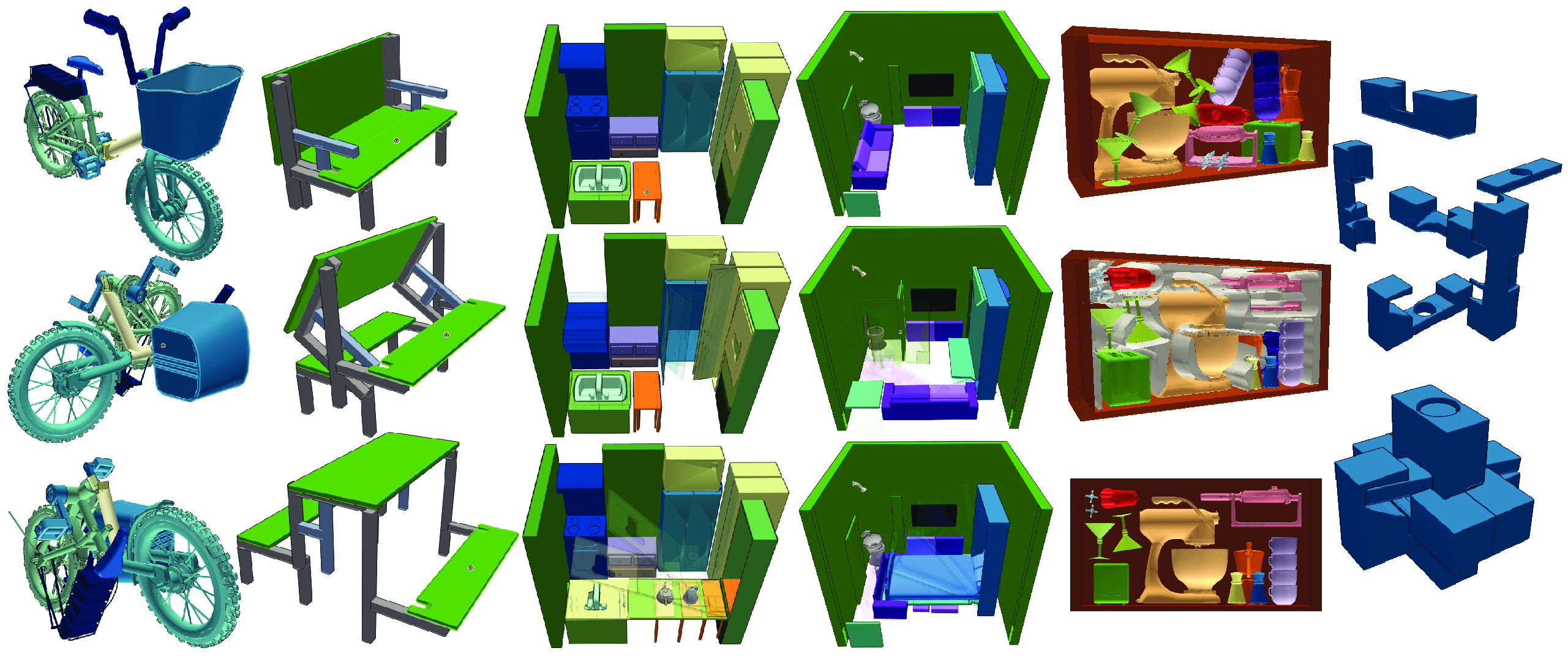 .
.I'm excited to post the project page for an upcoming siggraph 2016 paper, "Computational Design of Reconfigurables" a collaboration with Akash Garg and Eitan Grinspun.
Video:
Abstract: A reconfigurable is an object or collection of objects whose transformation between various states defines its functionality or aesthetic appeal. For example, consider a mechanical assembly composed of interlocking pieces, a transforming folding bicycle, or a space-saving arrangement of apartment furniture. Unlike traditional computer-aided design of static objects, specialized tools are required to address problems unique to the computational design and revision of objects undergoing rigid transformations. Collisions and interpenetrations as objects transition from one configuration to another prevent the physical realization of a design. We present a software environment intended to support fluid interactive design of reconfigurables, featuring tools that identify, visualize, monitor and resolve infeasible configurations. We demonstrate the versatility of the environment on a number of examples spanning mechanical systems, urban dwelling, and interlocking puzzles, some of which we then realize via additive manufacturing.
Spatial-temporal information about collisions between objects is presented to the designer according to a cascading order of precedence. A designer may quickly determine when, and then where, and then how objects are colliding. This precedence guides the design and implementation of our four-dimensional spacetime bounding volume hierarchy for interactive-rate collision detection. On screen, the designer experiences a suite of interactive visualization and monitoring tools during editing: timeline notifications of new collisions, picture-in-picture windows for tracking collisions and suggestive hints for contact resolution. Contacts too tedious to remove manually can be eliminated automatically via our proposed constrained numerical optimization and swept-volume carving.